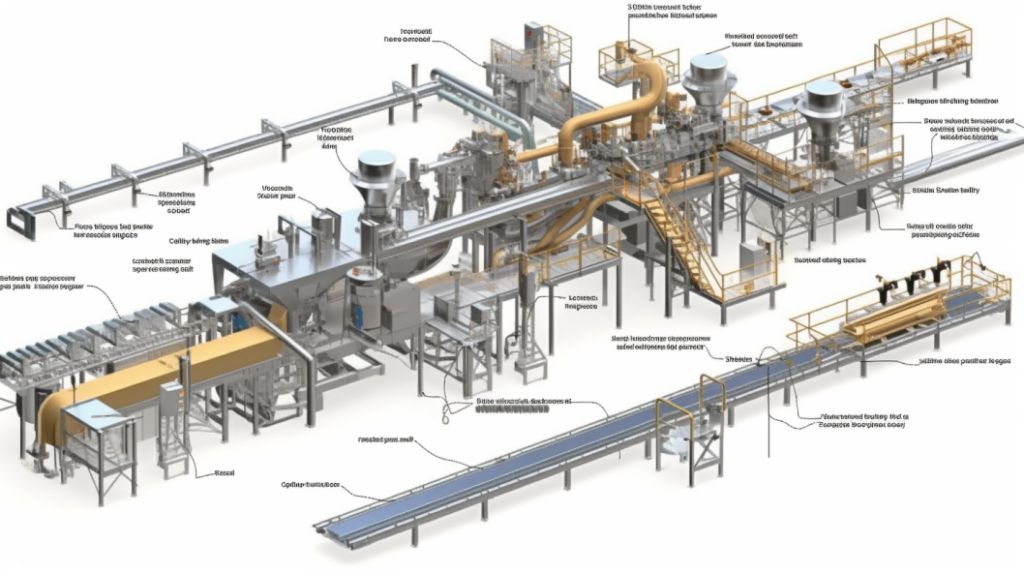Cracking the Code of HKSA 315: Overcoming the Absence of Preliminary Analytical Procedures

Picture yourself as a detective, tasked with solving a complex case, only to realize you’ve skipped crucial steps in your investigation. For CPA auditors and practicing accountants, neglecting preliminary analytical procedures during an audit is a similar misstep. In this article, we’ll don our detective hats and uncover the importance of meeting HKSA 315 requirements while exploring how our tailored services can bolster your audit team’s capabilities.
The Missing Piece: Preliminary Analytical Procedures
Preliminary analytical procedures are an essential component of the risk assessment process, as mandated by Hong Kong Standard on Auditing (HKSA) 315. When these procedures are absent, audit teams risk overlooking significant risks, leading to an incomplete understanding of the client’s financial position and potential misstatements.
Assembling the Toolkit: Audit Program 3.0 and Audit Training Services
To help your audit team crack the code of HKSA 315, our company offers a range of services tailored for CPA auditors. Two key offerings that are particularly relevant to this topic are our innovative Audit Program 3.0 and comprehensive audit training services.
Audit Program 3.0: The Master Key to Unlocking HKSA 315 Compliance
Our Audit Program 3.0 is the master key you need to ensure that your audit team consistently incorporates preliminary analytical procedures into their risk assessment process. This cutting-edge automated program generates illustrative audit programs, complete with risk identification, assessments, and documentation of internal controls relevant to any client industries and principal activities.
By incorporating Audit Program 3.0 into your audit engagements, you’ll not only streamline your methodology but also ensure that your team adheres to HKSA 315 requirements, unlocking a more thorough and effective risk assessment process.
Audit Training Services: Sharpening Your Team’s Investigative Skills
In the world of auditing, a well-trained team is indispensable in navigating the complexities of risk assessment and compliance with professional standards. Our audit training services equip your team with the knowledge and skills needed to excel in their roles and ensure that preliminary analytical procedures are consistently integrated into their work.
By investing in our audit training services, you’ll not only improve the proficiency of your team but also ensure that they have the expertise to meet the requirements of HKSA 315 and conduct a comprehensive risk assessment.
Extra Support: Mock Reviews and Quality
Management Manuals
While our Audit Program 3.0 and audit training services provide a strong foundation for meeting HKSA 315 requirements, the key to long-term success lies in continuous improvement. Our mock reviews and quality management manuals are designed to help your practice stay ahead of the curve.
Our mock AML reviews and AFRC inspection services can identify potential issues before they escalate, allowing you to address them proactively. Meanwhile, our quality management manuals, designed specifically for CPA practices, outline the essential steps to establish a robust risk assessment process that adheres to HKSA 315 requirements.
Solving the HKSA 315 Puzzle: Embracing Preliminary Analytical Procedures
As you embark on the journey to crack the code of HKSA 315, our innovative Audit Program 3.0 and comprehensive audit training services serve as essential tools to help your audit team overcome the absence of preliminary analytical procedures.
By embracing these services, you’ll not only enhance your audit team’s capabilities but also ensure that your risk assessment process is thorough, efficient, and compliant with professional standards.
But the journey doesn’t end there. By incorporating our mock reviews and quality management manuals into your practice, you’ll further strengthen your adherence to HKSA 315 requirements and ensure the continued integrity and effectiveness of your risk assessment process.
So, fellow auditors and accountants, it’s time to put on your detective hats and solve the HKSA 315 puzzle with confidence. Equip yourself with our innovative services and lead your audit team to consistently incorporate preliminary analytical procedures, ensuring a comprehensive risk assessment that unlocks the truth behind your clients’ financial positions. The solution awaits!

EQC Discussion and Analyses
As experienced auditors and consultants to Hong Kong audit firms, we understand the importance of compliance with the Hong Kong Standard on Auditing (HKSA) 315. In this article, we will share insights on how to modify your daily work to comply with HKSA 315 and provide practical examples to illustrate our points.
1. Document risks, assessments, and internal controls
One crucial aspect of complying with HKSA 315 is the proper documentation of risks, assessments, and internal controls. To demonstrate your risk assessment process to regulators, it’s essential to maintain detailed records throughout the audit.
Example:
Suppose you are auditing a retail company with a complex inventory system. You should identify risks related to inventory valuation and document the controls in place to mitigate these risks. Additionally, assess the effectiveness of these controls and create an audit trail that demonstrates your understanding of the client’s risk environment.
2. Use Audit Program 3.0 for HKSA 315 compliance
Audit Program 3.0 is a valuable tool for ensuring consistent preliminary analytical procedures, which are essential for HKSA 315 compliance. By incorporating this program into your audit engagements, you can streamline your risk assessment process and ensure adherence to professional standards.
Example:
Imagine you are auditing a manufacturing company. Utilizing Audit Program 3.0 will help you identify risks related to production efficiency and cost control. The program generates tailored audit programs, enabling your team to focus on the most significant risks and ensuring a thorough risk assessment process.

3. Invest in audit training for expertise in preliminary analytical procedures
To enhance your team’s capabilities in risk assessment, consider investing in audit training. This training sharpens your team’s investigative skills, enabling them to consistently integrate analytical procedures into their work.
Example:
An audit team member may be unfamiliar with specific industry risks, such as those related to a construction company. By investing in audit training, you equip your team with the knowledge and skills needed to understand and assess these unique risks, ensuring a more comprehensive risk assessment.
4. Utilize mock reviews and quality management manuals for continuous improvement
Maintaining long-term success in adhering to HKSA 315 requirements involves continuous improvement. Mock reviews and quality management manuals can help your practice stay ahead of the curve and maintain compliance.
Example:
A mock review of your audit engagements can identify potential weaknesses in your risk assessment process. By addressing these issues proactively, you can ensure that your practice remains aligned with HKSA 315 requirements. Additionally, quality management manuals offer guidance on establishing a robust risk assessment process, further strengthening your practice’s compliance.
In conclusion, to overcome the absence of preliminary analytical procedures and comply with HKSA 315, it is essential to document risks, assessments, and internal controls, utilize tools like Audit Program 3.0, invest in audit training, and implement mock reviews and quality management manuals. By incorporating these practical recommendations into your daily work, you can ensure a thorough and efficient risk assessment process that meets professional standards.
